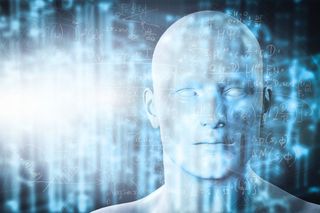Deep Learning Pdf Free Download
What is Deep Learning? Everything you need to know

Although technology has come a long way in recent years, not least in terms of the immense power and resources available through cloud computing services let alone the vast amount of data that can be allocated to cloud storage, computers and machines still can't match the power of the human brain.
What makes humans so unique is that we can learn as we go, drawing on our memories and experiences. That means taking in data from the world around us and forming ideas about how to optimally perform tasks or understand new information.
Deep learning, which is a branch of artificial intelligence, aims to replicate our ability to learn and evolve in machines. At the end of the day, deep learning allows computers to take in new information, decipher it, and produce an output—all without humans needing to be involved in the process. This field has enormous implications for the technologies of the future, including self-driving vehicles, facial recognition software, personalized medicine, and much more.
Teaching Computers to Find Patterns
The end goal of deep learning is to teach a computer how, given a set of unstructured data, to recognize patterns. A simple example of unstructured data is an image of a real-world scene, in which things like the sky, trees, and people aren't marked for the computer by a human supervisor. An algorithm trained by deep learning should be able to identify those individual components. That is, it should be able to tell you which pixels in the image make up a person, which make up a tree, and which are part of the sky.
On a broader scale, this capacity for pattern recognition can be applied to almost anything. For example, in a self-driving car, the computer should be able to recognize a stop sign and then trigger the car to stop appropriately. In medicine, a deep learning algorithm should be able to look at a microscope image of cells and decide if those cells are cancerous are not.
Deep learning has essentially the same goal as machine learning, which plays an increasingly large role in modern technology. However, machine learning is limited in how much data it can take in. It may be good at recognizing features in a set of images, for example, but machine learning doesn't have the capacity to adapt to a 3-dimensional scene like a self-driving car must be able to do.
Deep learning, on the other hand, offers a virtually unlimited capacity for learning that could theoretically exceed the capacity of the human brain someday. That's because of the family of algorithms that underlie deep learning, known as neural networks.
Copying the Brain's Connections
Neural networks are so-named because they essentially aim to mimic the functioning of neurons in the human brain. These networks are made up of three layers of digital neurons: the input layer, the hidden layer, and the output layer.
The input layer is a series of digital neurons that "see" the information the computer is being given. One neuron might fire when the color green is present in an image, for example, while another might fire when a particular shape is present. There can be thousands of input layer neurons, each firing when it sees a specific characteristic in the data.
The output layer tells the computer what to do in response to the input data. In a self-driving car, these would be the digital neurons that ultimately tell the computer to accelerate, brake, or turn.
The real magic of a neural network happens in the hidden layer. This layer takes the neuron firings from the input layer and redirects them to fire the appropriate output layer neurons. The hidden layer consists of thousands or millions of individual rows of neurons, each of which is connected to all of its neighbors within the network.
Training a deep learning model involves feeding the model an image, pattern, or situation for which the desired model output is already known. During training, each connection from one neuron to another is strengthened or weakened based on how close the network's actual output is to the intended output. If it was very close—our self-driving car stopped at the stop sign—the connections might not change much at all. But if the model result is far from the intended result, the connections between neurons are tweaked slightly.
Doing this millions of times allows the network to strengthen connections that do a good job of producing the desired model output and weakening connections that throw off the model results. The final model, then, has learned how to take in new data, recognize patterns, and produce the desired outcome based on those patterns without human supervision.
Future Tech and Deep Learning
Deep learning holds a lot of promise for new automated technologies. Self-driving cars are perhaps the most prominent potential use of deep learning algorithms, but there are far more applications in the business world and beyond.
For example, deep learning could have major implications for the finance industry. Banks could use deep learning to help protect your online accounts by teaching a model to determine whether your latest sign-in attempt is similar to your usual sign-ins. Or, banks can apply deep learning algorithms to better pick up on fraudulent activities like money laundering. Yet another possibility is that banks and investment firms use deep learning to predict when stock prices are about to go up or down.
Another application of deep learning technology is facial recognition. For facial recognition to work on a wide scale, the computer needs to be able to recognize you whether you get a haircut or a tan, or put on makeup. A deep learning algorithm trained on images of your face would allow facial recognition software to recognize you no matter what you look like on a given day, while keeping others out of your accounts.
Interestingly, deep learning can also help scientists predict earthquakes and other natural disasters. In earthquake-prone areas, the ground is almost always trembling a little bit. Deep learning models can be trained on what kind of shaking patterns preceded earthquakes in the past—and then sound the alarm when these same patterns are detected in the future.
As deep learning technology continues to improve, the list of potential applications is only likely to get longer and more impressive. We may be able to teach computers to recognize patterns, but human creativity will be essential in figuring out how best to put deep learning to work for society.
- Protect your business from malware with the best cloud antivirus.

Michael Graw is a freelance journalist and photographer based in Bellingham, Washington. His interests span a wide range from business technology to finance to creative media, with a focus on new technology and emerging trends. Michael's work has been published in TechRadar, Tom's Guide, Business Insider, Fast Company, Salon, and Harvard Business Review.
Posted by: sherylfraunfelterssa.blogspot.com
Source: https://www.techradar.com/in/news/what-is-deep-learning
Komentar
Posting Komentar